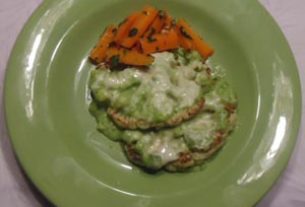At Home in Talpa de Allende, Jalisco
Anyone who has ever had enough stamina or time to traipse through the National Museum of Anthropology in Mexico City gets a mere glimpse of Mexico’s treasures. I’ve heard there are enough artifacts in storage to fill the museum twenty times over, and still have skeletons in the closet.
There was a time when it was not uncommon to answer a knock on your front door to find a shabbily clad man with a burlap bag slung over his back or cradled in his arms, suspiciously looking around and whispering, “Señora, want to see my antiques? Want to see my monos? Cheap, very cheap.” Of course we wanted to see and buy, if the price was right, which usually was. We had no idea we were breaking the law. In fact, we weren’t. This happened before there was a law or presidential decree forbidding us to provide a home for the relics of another era.
Friends who lived in the Lake Chapala area in those days frequently unearthed what some called blood pots in their gardens while planting another poinsettia or climbing begonia. Blood pots are small, shallow clay pots about the size of a… aarrggh! I just realized what an antique I am! I was going to say, ‘about the size of a half dollar or a fifty cent piece,’ but can anybody remember how big that was? Let’s go for a Mexican centenario; that’s pretty close.
Now that we have established the size of a blood pot… it stood on three small protuberances, which were part of the pot, making it a monolithic tripod.
Some people claim that once upon a time, the Indians would prick their finger, squeeze a bit of their blood into the pot, and toss it into the lake. This was to appease the ancient gods.
It’s only been about thirty years since the Mexican government realized the country was more than abundant in pre-Columbian artifacts, but they should not be held in private collections of individuals. When that decree came down, some of my closest friends landed in jail. They were the ones who got “caught.” The rest of us wrapped our pots and beads in old newspaper, and buried them in the garden. They aged about twenty years; we dug them up, and once again, they occupy a prominent spot in our homes. I doubt if any of our dancing dogs, clay dolls with sticks through their noses or broken pots would score very high on Mr. Libby’s radiocarbon dating test. I know most of mine were bought from a vendor along the roadside the next day after he made them. Still, they are cherished.
Guachinango is another small town off the highway that connects Guadalajara to Ameca, Mascota and Puerto Vallarta. You don’t go through Guachinango to get anywhere, and you have to go out of your way to get to Guachinango. Incidentally, the name of this town means red snapper, (sometimes spelled Huachinango), but I can assure you there is not a body of salt water within a hundred miles.
Most of these country towns have their schools spread out in different directions as we do up north. Not Guachinango. There is one area dedicated to the higher learning facilities, and it looks like a college campus. Kindergartens stretch across the acreage to the middle schools, and on to high schools or preparatorias. Outside the principal director’s office is a small garden where an elaborately carved stone water fountain stands. It dates back to the 16th century. The director claims he found it while visiting his friend on a nearby ranch. The rancher was using it as a feeding trough for his horse.
Many of these small towns have their own museums, which are extremely interesting in that their treasures are local finds. You’ll find one in Mascota, a town over the hill and around the bend from Talpa de Allende.
Joseph Mountjoy, (recently retired) Professor of Archaeology at University of North Carolina, has been digging in Jalisco, off and on, for the past twenty years. He happened to be in the area when a rancher unearthed what appeared to be human bones with his back-hoe. Mountjoy was called to the scene, and Mascota’s museum was born. It is worth the drive to see what Mountjoy and his team have brought to light. Among the bones, bowls, pots, dolls and obsidian points is a clear, faceted stone with a tiny hole drilled through it. Although nobody has a clue as to how the stone might have been drilled, it’s believed it was worn as a pendant, and perhaps a hair from a horse’s tail might have served as the string from which it hung.
Mountjoy says, “It is simply the oldest faceted gemstone in the world, predating gem faceting in Europe by at least 2,000 years.”
One of my favorite antiques is a live doll. Last month she celebrated a century plus one year. She reads and knits without glasses, croons along with Luis Miguel as she sways to his rhythms, and remembers The Cristero War in detail. Last year there was an exhibition of manual arts in Talpa de Allende. The working hand of the mountain woman was featured. One lady created a replica of the town’s main cathedral out of chilte, similar to the one she sent to Angentine President Jose Peron when his wife Eva, died. His thank-you letter was proudly displayed alongside her exhibit.
My doll, Mama Chayo, offered a sampler she had stitched when she was thirteen years old. I protested that I couldn’t accept this exquisite piece of work to go on display. “Somebody might touch it,” I warned.
She jubilantly exclaimed, “Let them touch it! I made it! Let them touch it!”
Yes, there are precious treasures in these mountains.

